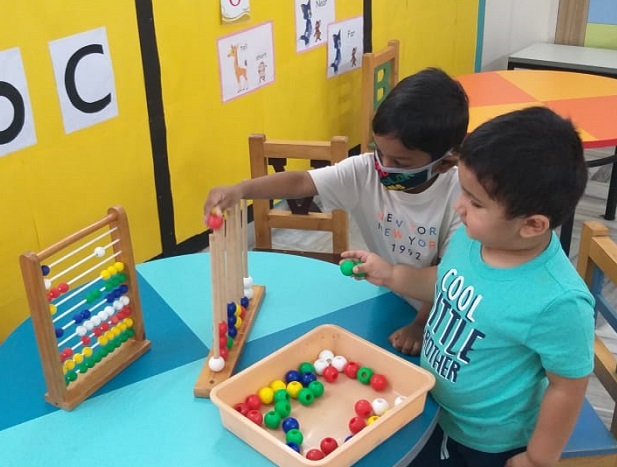Teaching children to express
- 21 April 2022

Given what our children have been through the last two years, we want to do everything we can to help them access positive learning outcomes.
According to UNICEF, one-third of primary and secondary students have parents reporting that their child’s mental health has been poor since May 2020. 1098 – “Recently the child helpline -1098, witnessed 4,60,000 calls in less than a month, a 50% increase from their regular call volumes in 2020”. These are not just data points; these are our children. ( COVID-19 and children – UNICEF DATA ).
Now more than ever, it is crucial that we do whatever it takes to help. our children deal with the challenges and trauma they faced and continue to face during the pandemic to preserve their overall well-being.
An opportunity to minimize this risk is by introducing Social-Emotional Learning (SEL). A component that helps children be more aware of how they feel, giving them a safe space to express their thoughts and emotions, dedicate time for their social-emotional well-being, and develop creative and artistic ways to express the same.
In this article we share 5 Ways to help children learn and understand their emotions better:
When we teach our child to name feelings when they occur, our child will build an emotional vocabulary. they get to the point where they can identify those feelings and talk to us about them. This will then help them learn the basics of expressing their feelings appropriately.
If we start by talking about our feelings and describe how to best express those feelings. We can create opportunities for our children to come up with solutions for various situations, and then discuss why they are or are not appropriate.
Early years children need to bond and feel connected to mum, dad, and teachers to regulate and deal with their emotions. Thus, when we notice our child getting upset or overwhelmed, the best thing you can do for him/her is to reconnect. This helps you see things from our child’s perspective. This helps you understand the reason behind their meltdowns and allows us to respond appropriately.
Praising our child whenever he/she talks about his/her feelings. This brings across the message that he/she did the right thing and that we are proud of him/her for reaching out to you and talking about feelings.
Social-Emotional Learning empowers children to find their voices, express themselves, and nurture their curiosity—to listen carefully, ask questions, share and integrate their everyday experiences to reflect and become their best versions.
In Oakridge International School as part of the Student Well-Being, we have launched a wellbeing club “Mindful Mondays” to cultivate this wonderful skill. It’s a whole-school program aimed at helping kids and teachers become more attentive and expressive.